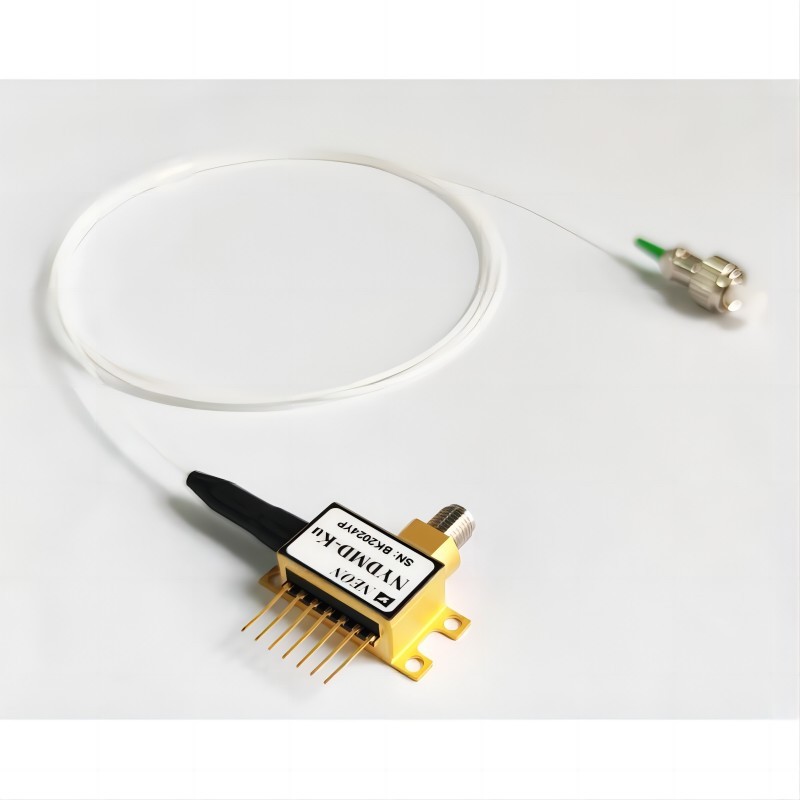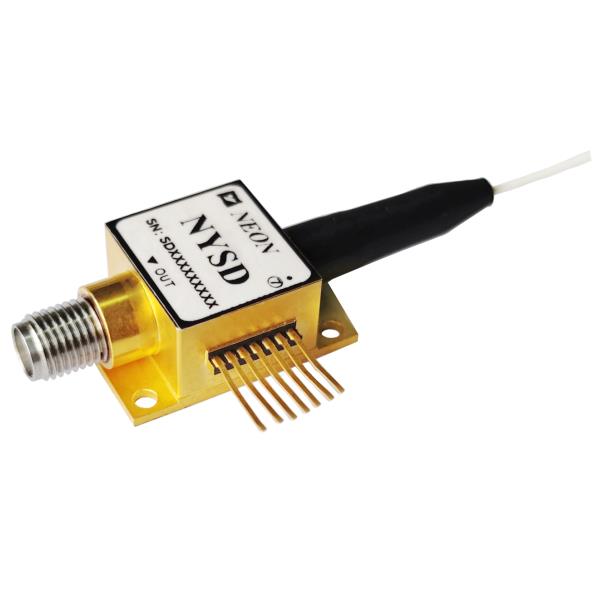TFLN Modulator: What is It and How Does It Work?
With the rapid advancement of optical communication technology comes an increasing demand for optical modulators with higher bandwidth, lower power consumption and smaller form factors. Thin-Film Lithium Niobate (TFLN) modulators have become a popular choice in photonic integration due to their exceptional performance.
Here, we will investigate TFLN modulators in detail, providing an in-depth examination of this innovative electro-optic modulation technology.
Part 1. What is a TFLN Modulator?
Thin-Film Lithium Niobate modulators (TFLN for short) are high-speed electro-optic modulators utilizing lithium niobate as the core material, and are well-known for their excellent electro-optic properties, especially the Pockels effect, which allows for efficient light modulation using an applied electric field.
Contrasting traditional bulk lithium niobate (Bulk LN) modulators, which are large and power-intensive devices unsuited to modern integration technologies, TFLN modulators utilize cutting-edge micro and nanofabrication techniques for construction.
Lithium niobate can be thinned to sub-micron levels using these techniques and attached to substrates such as silicon, silicon dioxide, or sapphire for bonding purposes. This approach allows seamless integration with other photonic components as well as CMOS processes, making TFLN modulators ideal for photonic integrated circuits (PICs).
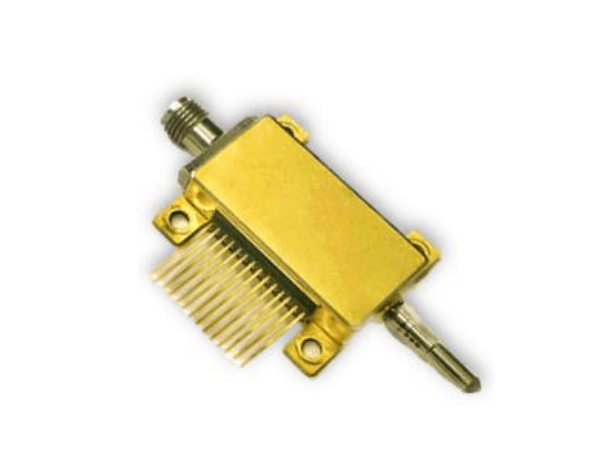
Part 2. How Does a TFLN Modulator Operate?
TFLN (Thin-Film Lithium Niobate) modulators work according to an electro-optic effect known as Pockels’ effect, which refers to a linear change in refractive index when an external electric field is applied; specifically this refers to lithium niobate crystal.
By taking advantage of this phenomenon, TFLN modulators can precisely control the phase or intensity of an optical signal passing through.
An example of an TFLN modulator consists of several key components. These components include:
Thin-Film Lithium Niobate Layer: This active material enables high-speed modulation. With its outstanding electro-optic coefficient, this allows rapid and efficient tuning of light properties.
Electrode Structure: Metal electrodes are placed near lithium niobate layers to generate high-frequency electrical signals that induce an electric field which changes its refractive index, thus altering its properties.
Optical Waveguides: Fabricated within lithium niobate layers using precise lithographic techniques, these waveguides confine and guide light with minimal loss to ensure efficient modulation.
Substrate Layer (e.g. SiO2 or Silicon): Provides mechanical support while also enabling integration with photonic or electronic components. Silicon-based substrates also make CMOS processes compatible, which enables large scale production.
TFLN modulators boast shorter interaction lengths when compared with traditional bulk lithium niobate modulators due to tighter mode confinement and stronger field overlap.
High-speed modulation can thus be accomplished with much smaller footprints, greatly increasing efficiency of chip-scale packaging and overall system integration.
TFLN technology is uniquely suited for next-generation high-density photonic integrated circuits.
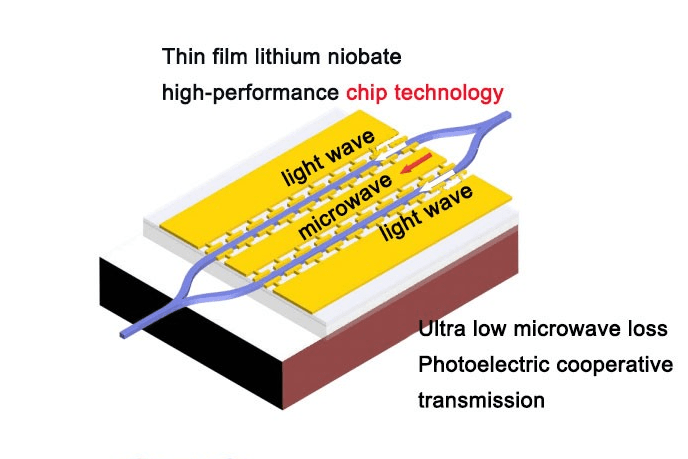
Part 3. Benefits of TFLN Modulators
TFLN (Thin-Film Lithium Niobate) technology brings together the proven electro-optic properties and long-term stability of conventional lithium niobate with thin film fabrication’s flexibility, scalability, and cost advantages – creating an entirely new class of modulators with improved performance and integration potential. TFLN modulators’ main benefits include:
1. Ultra-High Bandwidth (>100 GHz)
TFLN modulators offer extremely high modulation speeds with bandwidths exceeding 100 GHz, making them suitable for next-generation optical communication systems with 100G, 200G, 400G or even terabit data rates.
Their high speed performance can be attributed to both lithium niobate’s strong Pockels effect and thinner film structures’ reduced device capacitance capabilities.
2. Ultra-Low Optical Loss
TFLN modulators stand out for their exceptionally low optical loss insertion loss, often below 2dB, which makes them much lower than traditional silicon photonic modulators which typically experience greater propagation and coupling losses.
Lower optical loss results in improved signal quality, longer transmission distances and decreased demand on optical amplifiers.
3. Compact Size and Easy Integration
Thin-film architecture provides for tight confinement of both optical and electrical fields, leading to shorter modulation lengths and smaller device footprints, making integration simpler into dense photonic integrated circuits (PICs), supporting advanced functionalities within one chip such as modulators, filters, multiplexers all within a small footprint area.
4. Low Driving Voltage (Low Vp)
TFLN modulators operate with very low half-wave voltages (Vp), often lower than 2 V. This lower Vp means the modulator needs less electrical power to achieve the same optical phase shift, leading to decreased power consumption and the use of standard CMOS-level driver electronics, making these modulators attractive choices for power-sensitive applications like data center interconnects.
5. Compatibility With CMOS Production
One of the chief benefits of TFLN technology lies in its compatibility with CMOS fabrication processes. TFLN modulators can be manufactured using silicon-compatible substrates and fabrication techniques for wafer-scale production, not only does this lower manufacturing costs but it also facilitates co-integration with electronic components to accelerate development of fully integrated optoelectronic systems.
TFLN modulators are revolutionizing high-speed photonics and poised to become cornerstone technologies in optical communication, quantum photonics, and integrated photonic computing platforms.
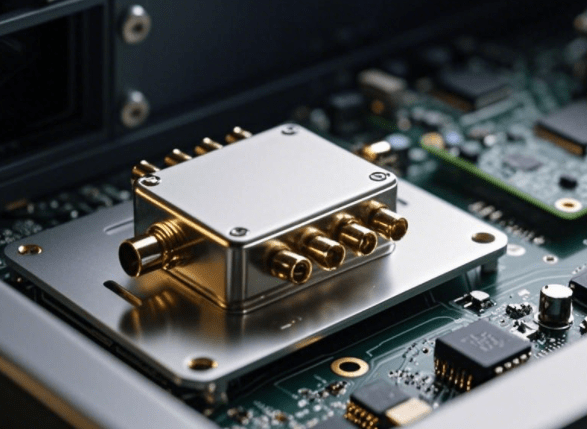
Part 4. Key Application of TFLN Modulators
Due to the rapid advancement of technologies such as 5G/6G, cloud computing and artificial intelligence, demand for faster, more efficient and smaller optical components has skyrocketed.
Thin-Film Lithium Niobate modulators (TFLNs), thanks to their exceptional performance characteristics have emerged as essential enablers across multiple cutting-edge application domains; below are just a few areas in which TFLN modulators are making an impactful statement:
1. Optical Communication Systems
TFLN modulators are cornerstone components in modern optical communication networks, including metro, long-haul and submarine transmission systems. Their ultra-high bandwidth and low insertion loss make for long-distance data transmission with minimal signal degradation; backbone networks as well as access networks utilize TFLN modulators for stable modulation at 100G, 200G or 400G data rates or beyond.
Their low driving voltage and compact size enable energy efficiency and cost-effective deployment – essential elements for expanding global internet infrastructure.
2. Data Center Interconnects (DCI)
As data centers scale to accommodate increasing volumes generated by cloud services, big data, and AI workloads, demand for high-performance interconnects increases rapidly. TFLN modulators are ideal for use within and between data centers where high speed communication with low latency is key – thus fulfilling their potential role of high performance connections for data center operations.
Their small footprint and compatibility with CMOS electronics enable their seamless integration into transceiver modules and PICs (photonic integrated circuits), increasing throughput while keeping power consumption and system complexity to an absolute minimum.

3. LiDAR (Light Detection and Ranging)
LiDAR systems play an integral part in autonomous driving, robotics, and aerial surveying applications, using precise optical modulation to generate laser pulses that can then be analysed. TFLN modulators offer fast modulation speeds, low latency times, and excellent optical fidelity – perfect for advanced LiDAR architectures.
Fast response and high extinction ratio enable more accurate distance and velocity measurements that are critical for real-time environmental sensing applications such as autonomous cars, drones and industrial automation systems.
4. Photonic Computing and Quantum Communication
As traditional electronic computing approaches its physical and energy limits, photonic computing (which uses light instead of electrons for processing) has emerged as a promising alternative. TFLN modulators play a pivotal role in these systems by providing high-speed, low-noise optical modulation with ultrafast switching capabilities.
TFLN devices provide high linearity and low noise characteristics that are especially advantageous in quantum communication, where delicate quantum states must be managed and transmitted with extreme precision. Their low noise level enables QKD protocols and other quantum protocols that depend on steady optical signals for proper functioning.
TFLN modulators have quickly established themselves as foundational technologies in next-generation photonics, opening up new capabilities across a wide variety of industries and applications.
Part 5. Comparison of TFLN Modulators with Other Modulation Technologies
As a next-generation electro-optic modulation technology, TFLN modulators combine the excellent electro-optic properties of lithium niobate with advanced micro-nano fabrication techniques.
They outperform traditional bulk lithium niobate modulators and silicon photonic modulators in several key aspects. The table below compares the main characteristics of these three common types of modulators:
| Feature | TFLN Modulator | Traditional Bulk LN Modulator | Silicon Photonic Modulator |
| Modulation Bandwidth | ⭐ High (>100 GHz)Suitable for ultra-high-speed communications | Medium (~40 GHz)Meets some communication needs | High (~80 GHz)Suitable for high-speed short-reach links |
| Insertion Loss | ⭐ Low (<2 dB)Improves system efficiency | MediumSlightly higher than TFLN | ⭐ Relatively high (>4 dB)Requires compensation techniques |
| Drive Voltage (Vπ) | ⭐ Low (<3 V)Energy-efficient and effective | HighHigh power consumption, difficult to reduce device size | MediumLimited linearity |
| Size & Integrability | ⭐ Compact,Well suited for photonic integration circuits | Large sizeNot favorable for chip-level integration | ⭐ Easily integratedSuitable for large-scale PICs |
| Manufacturing Compatibility | ⭐ CMOS-compatibleFacilitates mass production | Uses traditional processes,Hard to achieve wafer-scale manufacturing | ⭐ CMOS-compatibleCompatible with existing chip fabrication |
Overall, TFLN modulators offer a superior balance in bandwidth, loss, voltage, size, and manufacturing compatibility, making them one of the most well-rounded and promising modulation technologies today. With ongoing process advancements, TFLN is poised to become the mainstream solution for next-generation high-speed optical communications and photonic integration.
Part 6. Neon TFLN Modulator – Your Reliable Choice
Neon is an industry-leader in photonic technology and proud to present the Thin Film Lithium Niobate (TFLN) Modulator as an advanced solution designed to meet the demanding requirements of next-generation wireless communications, radar systems, and ultra-high speed optical networks.
Neon TFLN Modulators utilize cutting-edge thin-film lithium niobate photonics, breaking through traditional bottlenecks associated with bulk lithium niobate devices by employing advanced fabrication processes to fabricate low-loss submicron waveguides that create submicron devices without significantly decreasing device size or performance; they even outshone conventional silicon and InP modulators at similar half-wave voltage levels!
Our modulators feature finely optimized traveling wave electrodes, enabling ultra-high electro-optic bandwidths beyond 100 GHz. This makes Neon TFLN Modulators ideal for applications requiring ultra-fast signal processing, low latency, and high data throughput.
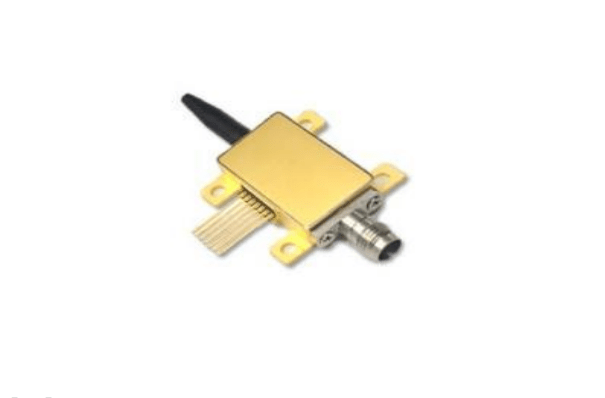
Key Features of Neon TFLN Modulators:
Compact and Highly Integrated: Designed for seamless integration into dense photonic integrated circuits (PICs), saving valuable chip space.
Ultra-High Bandwidth: Supports modulation bandwidths exceeding 100 GHz, ideal for next-gen 5G/6G and beyond.
Exceptional Linearity and Stability: Ensures high fidelity signal modulation for demanding applications.
Low Insertion Loss and Power Consumption: Enhances system efficiency and reduces operational costs.
CMOS Compatibility: Enables easy integration with existing semiconductor manufacturing processes, facilitating scalable mass production.
Robust and Reliable: Engineered for stable long-term performance under varied environmental conditions.
Neon’s TFLN modulators are extensively used in fields such as optical communications, data centers, lidar, quantum computing, and precision sensing. Choosing Neon means investing in a reliable, high-performance photonic component that drives innovation and future-proofs your technology infrastructure.
Final Thoughts
TFLN modulators are rapidly becoming key components in optoelectronic communication and integrated photonic systems due to their high bandwidth, low power consumption, and excellent stability. With the rise of 5G/6G, AI, and quantum communications, the application prospects of TFLN technology are increasingly broadening.
If you are looking for a reliable TFLN modulator supplier or customized services, don’t hesitate to contact Neon. We are dedicated to providing you with professional solutions and technical support.nical information and bespoke solutions.


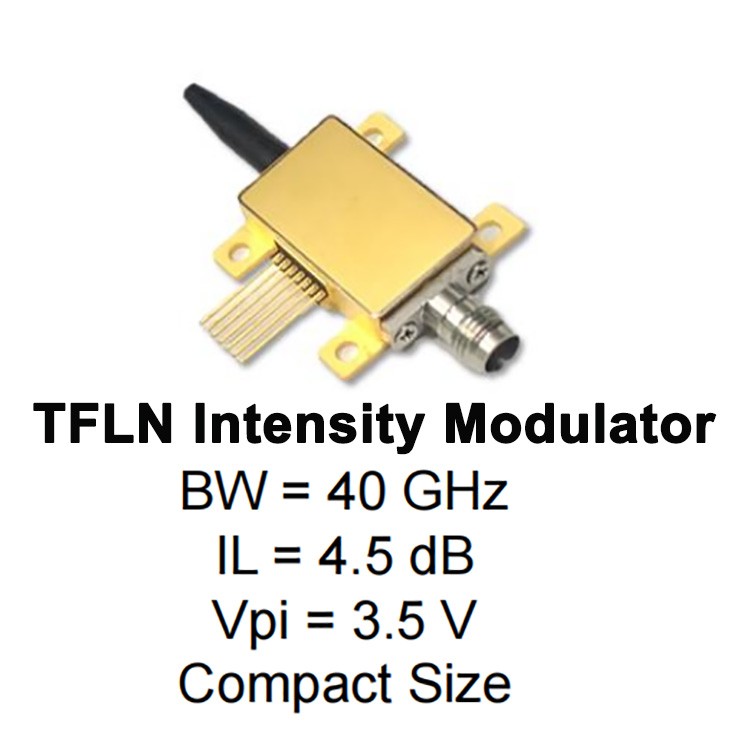
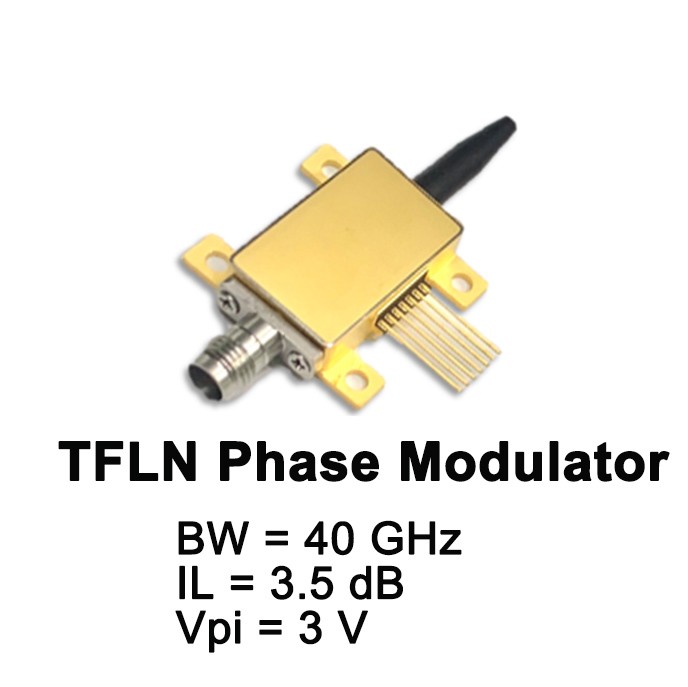
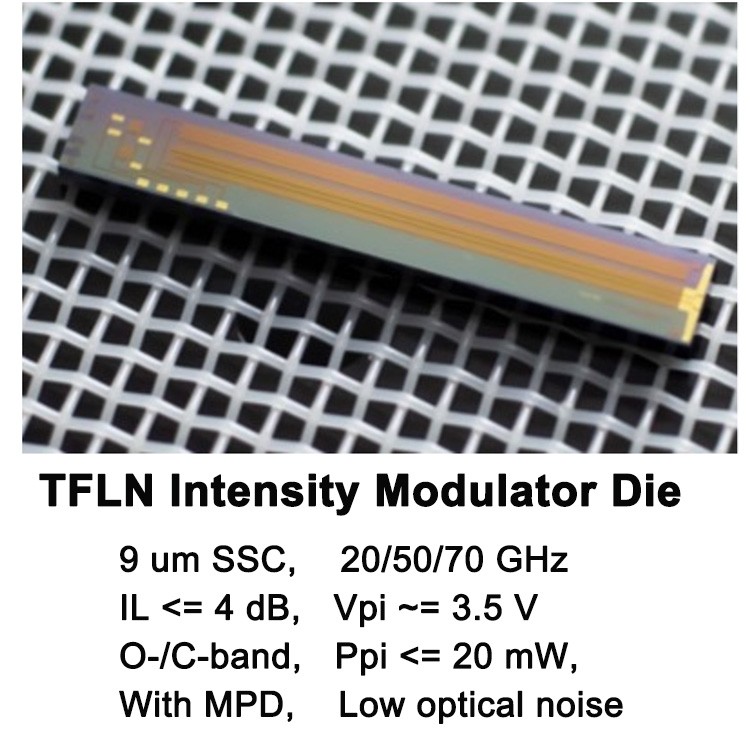
.jpg)
